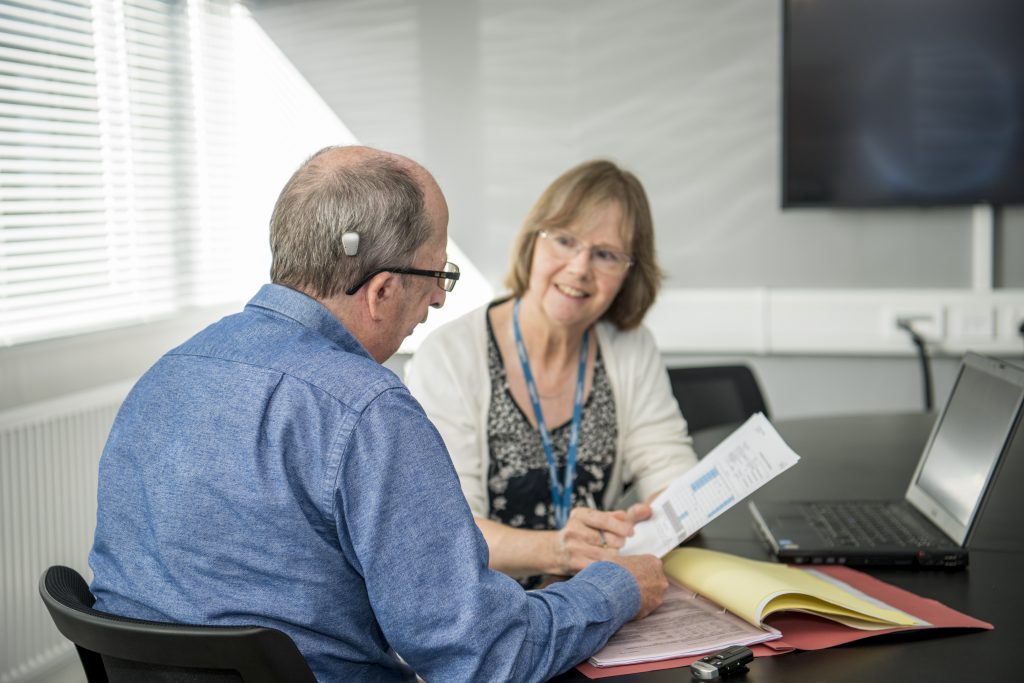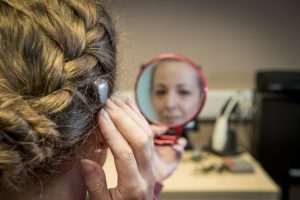Bone Conduction Hearing Devices

The Auditory Implant Service welcomes referrals for consideration for a bone conduction hearing device (BCHD) for patients who have a range of hearing losses that may be conductive, mixed or sensorineural. Recipients receive assessment, implantation and lifelong follow-up.
What is it?
A bone conduction hearing device is a device which converts sound waves into sound vibrations which are delivered directly to the inner ear through the skull bone. It uses the principle of bone conduction. BCHDs can be used with a non-surgical fitting on a softband, headband, SoundArc or adhesive adapter.
Who is it for?
Bone conduction hearing devices (BCHD) should be considered for:
- Patients for whom conventional air conduction hearing aids are not suitable
- The patients whose hearing loss falls within the BCHD manufacturer’s fitting guidelines
The conditions that may require bone conduction hearing devices (BCHD) include atresia/microtia, persistent otitis media and other permanent conductive hearing losses.
BCHD may be considered in some cases where there is ear canal stenosis, ear mould allergy or persistent otitis externa.
BCHD can be considered for unilateral hearing loss.
Suitable candidates will have:
- Unilateral or bilateral conductive or mixed hearing loss with a bone conduction pure tone average (0.5, 1, 2, 3,kHz) threshold up to 65dB.
- Stable bone conduction thresholds
- Unilateral sensorineural hearing loss (including single sided deafness, SSD) where the better ear has good bone conduction thresholds
- Trialled an air conduction hearing aid or wireless CROS or BiCROS hearing aid for a minimum of 4 weeks and not found it beneficial or be able to use the aid/s consistently
- Anatomical or physiological reasons why they are unable to trial an air conduction hearing aid
Patient benefit
Patients report the following benefits:
 No discomfort or infections due to ear moulds
No discomfort or infections due to ear moulds- Less distortion and feedback
- Better overall sound awareness for single-sided deafness
- Improved speech understanding in noise
What device ranges are available at USAIS?
Introduction to the USAIS BCHI Service
What does an assessment for a BCHD involve?



